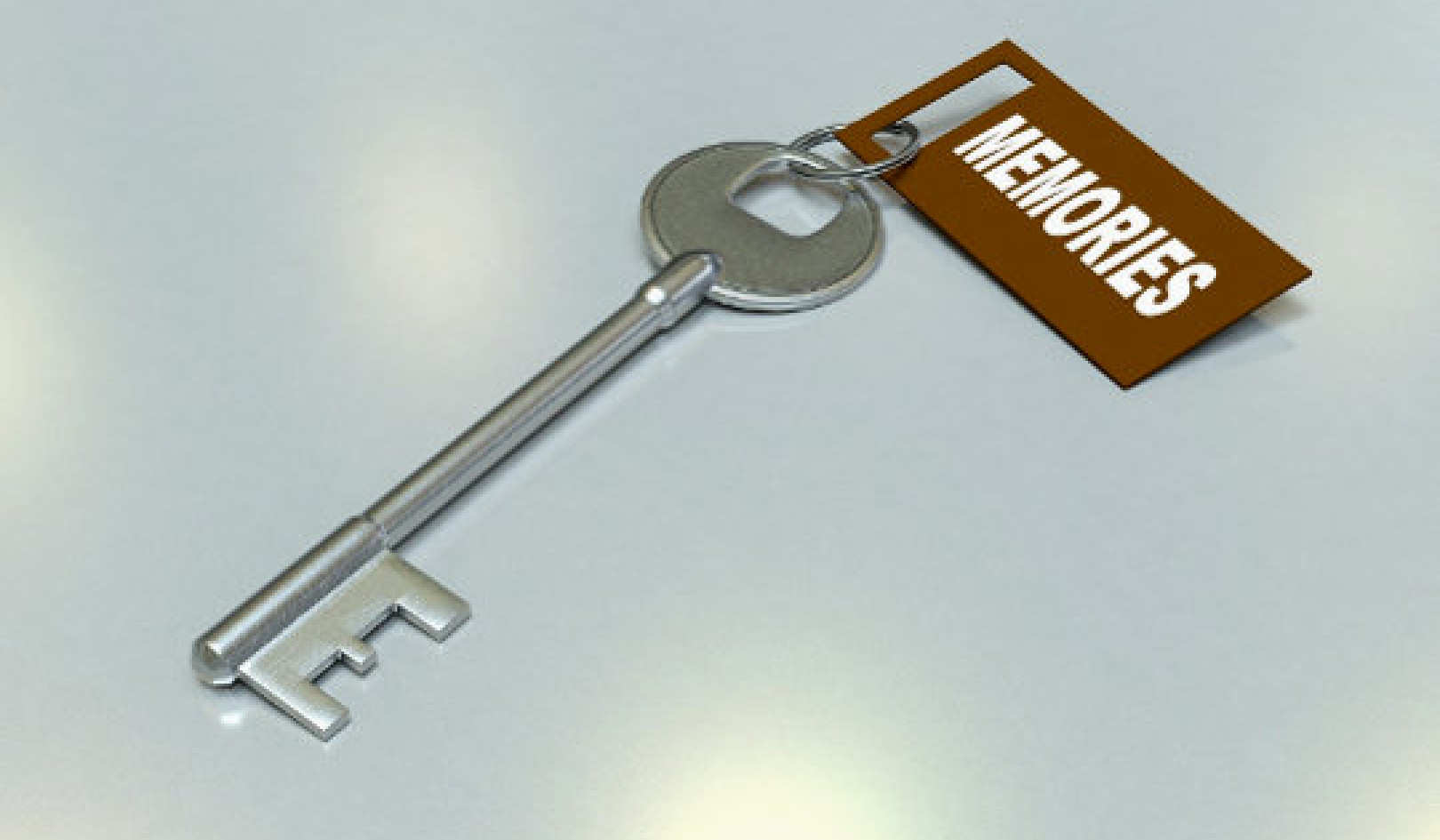
Even when we are supposedly attending to our bodies,
we are usually still in our heads.
— Reginald Ray, Touching Enlightenment
Clients often ask me what makes one memory deeply affect our body and another become simply a good story? The answer is unique for each person, because each unique life has its corresponding triggers and held beliefs. Still, the importance of knowing and understanding the difference between energy inside and outside oneself is universal.
When you can identify the quality of energy in charge inside you, you can determine the level of connection on which you want to engage. You have choices. When you are blindly triggered by a situation, you no longer have any choice.
What Stories Are You Telling Yourself?
Our biographies are truly ours to play with, and it is our responsibility to take care with how we do this. If, for instance, you tell yourself an old story that revolves around the notion that no matter what you do, “that’s just the way it is,” and the ending will always be the same, the universe will eventually show you exactly that.
Or if life in the present moment shows you a different possible ending, you’ll fail to see it or you’ll see that different ending and it will arouse only discomfort.
As long as you unknowingly follow the script currently written in your soft tissues, you’ll continue to create a limited, confined life story. Those limits, that confinement, starts with trauma, limited beliefs absorbed early on in life, or thoughts, but ultimately hits the body with the words we choose to use to describe the experience. For instance, think of these lines, culled from clients, and what they are telling the body:
“I’m not built for this.”
“That’s the way life is.”
“It hasn’t killed me yet.”
Here’s what your body hears (for each of the previous lines):
“I can’t ever physically do this.”
“Life is pre-determined, so why bother.”
“I will die from this.”
One way of turning those lines around is to deliberately craft an opposite statement. This may remind you of doing affirmations, but sometimes affirmations can have a “fake-it-’til-you-make-it” quality about them, or they can be sweeping generalities and a danger exists that you’ll connect only from the neck up. We don’t want to miss out on crucial body-based information. In this work, the re-working of words is only a start, a jumping-off point for inner soft tissue, fluid exploration, and deep listening.
Reframing Your Story
When it comes to listening to your body, you can’t fake anything, not even the smallest lie gets by for long. You can’t merely override destructive words imprinted in your cellular body by using abundant words and expect huge changes in your life. I’m all for using words of abundance and gratitude, but in my practice, I’ve noticed that affirmations alone seldom reliably offer the desired results. Used as a jumping-off point, however, they’re powerful.
How do you reframe a line like, “Well, it hasn’t killed me?” You might say instead, “Is this worth dying for?” Of course that’s just one reframe; however, by changing the statement into a question, you’ve opened yourself up to possibilities.
Beyond that one simple change, you’ve also received the opportunity to take the question to your body and ask for sensory feedback and clarity around this further question:
“Is there a purpose for this belief or this trapped energy, a job that it thinks it needs to do in my body?”
In the example of “It hasn’t killed me yet,” there might be a badge of courage or honor attached (“I can withstand anything”) which could qualify as a “job.” Let’s say the “it” in the phrase was neck pain—neck pain hasn’t killed me yet. You now have a specific place to inquire, and so you might place your hand lightly on your neck, relax, and wait, staying open to notice any changes there.
These changes can show up as temperature changes, breath changes, stomach rumbling, a softening or a sense of lengthening of muscles or other body tissues. Should these occur, you’ll know your body, the affected area and more, has felt heard. That is an example of the difference between affirmations and this work.
In the first case, you make only a verbal declaration of a wished outcome, whereas here you have a ripple effect throughout your body to track plus a potential re-boot of the body’s self-healing mechanism. Of course, just recognizing the damage those words set you up for might be all the wake-up call you need.
Questions To Ask Your Body
Here are some other questions you can ask your body during your inquiry process, questions that can offer up body-based information:
- When do you remember first hearing the phrase?
- How old were you?
- Where were you?
- Who said those words to you?
Again, trust what pops up for you first.
Reframing the Way We Speak To Ourselves and About Ourselves
It is possible, of course, to start a transformation process of certain limiting ideas by reframing the way we speak of them. Whether or not you can do that successfully will depend on your specificity, your attention to detail, and authentic-to-you word selection. Your intention is paramount.
Be deliberate. Notice that words can convey similar messages on one level but not on another. As an example, an Upledger mentor of mine suggested that instead of saying, “Don’t spill your milk,” you might try, “Be careful with your milk.”
I invite you to re-read those two statements. In between, take a breath and pause. Can you feel into—listen on a sensory level—the difference in those two statements? There is a tightness, a clipped sharpness to the first statement that presupposes something bad will happen soon and it will be all your fault.
Can you resonate with how much less milk might be spilled worldwide if children heard, “Be careful with” instead of, “Don’t spill”? There is a key distinction between the two phrases and also a large ripple effect in terms of how each statement is absorbed by the body. The body/mind cannot process a negative statement like, “Don’t spill your milk.” It can, however, absorb “Be careful...”—a positive, action statement.
Many of my clients have, as their underlying childhood mantra, some version of “I was never good enough for my parents (or teachers).” Never smart enough, pretty enough, or tough enough. The list of how we each own “faults” that are rarely ours, distances us from our gut knowing.
Conversely, I have clients who grew up excelling at everything: the brightest, fastest, and most talented. When faced with a pain message from the body that all is not well, they panic. “This can’t happen, not to me,” they’ll say as they determine that they must achieve their prior state of perceived perfection.
Railing at physical reality only compounds the existing pain. The process of healing is not, in itself, a race, and yet I see many clients whose expectations of how their body should heal cloud the advances their body is prepared to make.
The Luminous Energy Field
In the Western religious, historically linear view of the body, up toward heaven is good; down into the body is bad. In contrast, indigenous medicine men, and many energy-based alternative healers and facilitators work with an elongated donut shape, known as a torus shape, around the body. It’s the unseen but real luminous energy field that surrounds each of us.
Let’s include the concept of the luminous energy field in our quest to befriend our body. Think of the halo surrounding a saint’s head, or the large feathered Native Americans’ aura-like headdresses worn only by elder wise ones. Some relate this to the energy that emanates from chakra fields, and some experience this field as an energetic type of protection, whereas others view it simply as a way of embracing the unseen aspects of themselves. In every culture, the idea exists in some form.
This field has no sharp corners, no disconnection from source. Medicine men work within this field which can retain the old stories, ancestral debris, and imprints of the past that are not serving you. You can work with them as well, as you season your sensory perceptions.
Exercise One—Bringing Down Heaven
This is a qi gong exercise that is a favorite in my workshops.
Stand with feet shoulder-width apart. Check to make sure your knees are soft, not locked. Slowly bring your arms out to the side, imagining a bellows expanding or that you’re making a snow angel (Figure 3-1). The key is to only move as fast as you can while staying aware of the space you are moving through, not your arms moving. This is not calisthenics! (Hint: you’ll be moving slowly.)
Now, as your arms reach shoulder height, turn your palms upward toward the sky and continue moving your arms upward (Figure 3-2) until they meet above your head in an egg shape. Next, keeping that shape, turn your palms so they face your face. Bring your arms down very slowly, fingertips touching each other. The focus is wide here.
The trick is that as you move your arms down, I want you to be aware not only of the space in front of you, but to imagine a pair of arms coming down behind you, mirroring the action in the front (Figure 3-3). The idea is to bring recognition to the back of your body. That’s a whole area of your energy field that is often overlooked. Any lack of inclusion of this part of your posterior field represents energetic currency that belongs to you, yet is wasted.
Repeat Bringing Down Heaven a total of three times.
Once you get the hang of it, Bringing Down Heaven is a great way to wake yourself up to what unseen resources belong to you, both literally and figuratively. With a different intention, it’s also a great grounding exercise that can be completed in less than five minutes. It’s important that you be patient with yourself through this learning process.
©2015 by Jeannine Wiest. All rights reserved.
Reprinted, with permission of the publisher, New Page Books.
a division of Career Press, Pompton Plains, NJ. 800-227-3371.
Article Source
 The Alchemy of Self Healing: A Revolutionary 30 Day Plan to Change How You Relate to Your Body and Health
The Alchemy of Self Healing: A Revolutionary 30 Day Plan to Change How You Relate to Your Body and Health
by Jeannine Wiest.
Click here for more info and/or to order this book.
About the Author
 Jeannine Wiest is an advanced certified craniosacral therapist, Reiki master, and holistic coach in Los Angeles, California. She has danced on Broadway, dissected a human cadaver, and has clients ranging from corporate escapees to Oscar winners, from billionaires to chronically ill children in Bali. Jeannine received a BFA from Purchase College and holds craniosacral certification from the Upledger Institute, where she has been a longtime teaching assistant. She is a leading expert in combining craniosacral therapy concepts and creative principles. Her mission is to open people's eyes to the significance of having a nature-based and metaphorical relationship with one's own body. Visit her website at http://cranialalchemy.com
Jeannine Wiest is an advanced certified craniosacral therapist, Reiki master, and holistic coach in Los Angeles, California. She has danced on Broadway, dissected a human cadaver, and has clients ranging from corporate escapees to Oscar winners, from billionaires to chronically ill children in Bali. Jeannine received a BFA from Purchase College and holds craniosacral certification from the Upledger Institute, where she has been a longtime teaching assistant. She is a leading expert in combining craniosacral therapy concepts and creative principles. Her mission is to open people's eyes to the significance of having a nature-based and metaphorical relationship with one's own body. Visit her website at http://cranialalchemy.com























